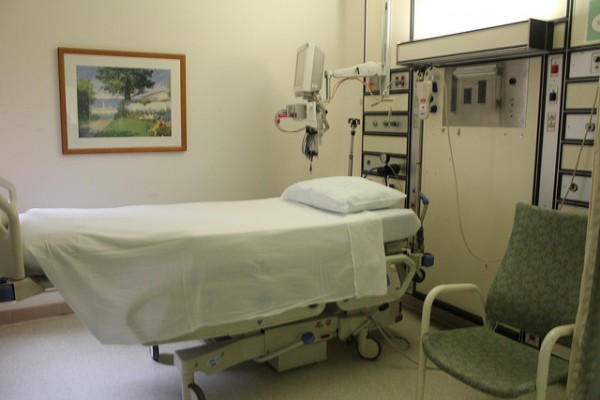
In some parts of California, you’re likely to have all sorts of medical treatments at the end of your life and die in a hospital. In other parts of California, you’re likelier to die at home with less intervention. Such disparities can be found across the country, and they are not indicative, as a rule, of patient preferences. They’re indicative of differences in mindsets and habits among healthcare providers. For most of us, “good” end-of-life care means the kind of care you want, but it can be hard to know if you live in a part of the country where that’s what you’re likely to get. In advance of the Zócalo event “Does Where You Live Determine How You Die?” we asked several healthcare scholars for tips: how do you know if you live in a place that offers good end-of-life care?
You can’t know for sure, but there are important indicators
 No matter where you live, if you have been diagnosed with an illness such as stage III or IV cancer, emphysema, heart failure, kidney failure, or dementia–or if your loved one is in the ICU with a life-threatening illness requiring a breathing machine for more than four days–the message you should be hearing from your doctors is “Hope for the best; prepare for the worst.” Beware when you hear them say, “We are doing everything we can.” That’s often doctor-speak for “S/he’s likely to die no matter what we do.”
No matter where you live, if you have been diagnosed with an illness such as stage III or IV cancer, emphysema, heart failure, kidney failure, or dementia–or if your loved one is in the ICU with a life-threatening illness requiring a breathing machine for more than four days–the message you should be hearing from your doctors is “Hope for the best; prepare for the worst.” Beware when you hear them say, “We are doing everything we can.” That’s often doctor-speak for “S/he’s likely to die no matter what we do.”
Your health system should encourage early referral to palliative care if you or your loved one has a serious chronic illness. “Early” means “at the same time you have been diagnosed,” not “after curative treatment has failed.” Palliative care providers, typically a team including doctors, nurses, social workers, chaplains, and other professionals, can work together with your other doctors to address key domains of care often forgotten by the others–symptom management, tailoring treatment to meet your own personal goals, and spiritual support–while you are receiving treatment aimed at prolonging your life.
If you are interested in your region’s track record for hospice use and ICU use for patient who died–types of care trajectories that are on opposite sides of the spectrum–check out the Dartmouth Atlas data tools at www.dartmouthatlas.org. Although this will not tell you anything about the quality of your providers, it’s important to know that simply by dint of living in Los Angeles you may be more likely to die hooked to machines than if you live in San Francisco.
Amber E. Barnato M.D., M.P.H., M.S., is associate professor of Medicine, Clinical and Translational Science, and Health Policy and Management at the University of Pittsburgh.
————————————-
Forget what the regional norm might be–the key is to make your preferences abundantly clear
 Patients near the end of life have many treatment possibilities–from aggressive medical interventions to comfort care. But in some areas of the country, the choice to receive less aggressive care is not always a clear option. We have known for a long time that there is marked geographic variation in the delivery of aggressive versus palliative measures. Patient preferences do not seem to drive this variation. For example, surveys find that many more patients prefer to receive palliative care than actually receive it.
Patients near the end of life have many treatment possibilities–from aggressive medical interventions to comfort care. But in some areas of the country, the choice to receive less aggressive care is not always a clear option. We have known for a long time that there is marked geographic variation in the delivery of aggressive versus palliative measures. Patient preferences do not seem to drive this variation. For example, surveys find that many more patients prefer to receive palliative care than actually receive it.
In a nationally representative study of 3,000 deaths, we found that patients who lived in regions of the country with aggressive end-of-life practice styles were less likely to die in the hospital and more likely to receive hospice care if they had prepared a written advance directive. Patients can prepare living wills to document preferences for the use or avoidance of life-sustaining treatments such as feeding tube placement and CPR so that physicians and family members can make decisions that reflect patient preferences when the patient is no longer competent to make these decisions.
Our results suggest that advance directives are most effective when one prefers treatment that is different from the local norms. By preparing an advance directive and discussing treatment preferences with family members, friends, or physicians, patients can help to ensure that they receive the type of end-of-life care that they prefer, regardless of the prevailing practices of the region where they live.
Lauren Hersch Nicholas, Ph.D. is a health economist at the Institute for Social Research, University of Michigan and a research affiliate of the UM Center for Healthcare Outcomes and Policy.
————————————-
There are clues–and we can all help to change the culture of end-of-life care
 Good end-of-life care for me means at least two things. First, I don’t want to spend my last days in unnecessary pain. I also don’t want to go through a vicious cycle of hospitalization and ICU stays. That means I would need to live in a place where the indispensable value of palliative and hospice care is recognized and infused throughout the overall healthcare culture and system. Second, I want to be cared for by healthcare professionals who respect my autonomy. I don’t want them to make assumptions about what I want or think based on my race, ethnicity, gender, wealth, education, or religion. Instead, I want doctors, nurses, and social workers to take time to listen to me, talk to me as a person and not just another dying patient, and try their best to respect my wishes. This means I would need to live in a place where thoughtful end-of-life care conversations take place on an ongoing basis.
Good end-of-life care for me means at least two things. First, I don’t want to spend my last days in unnecessary pain. I also don’t want to go through a vicious cycle of hospitalization and ICU stays. That means I would need to live in a place where the indispensable value of palliative and hospice care is recognized and infused throughout the overall healthcare culture and system. Second, I want to be cared for by healthcare professionals who respect my autonomy. I don’t want them to make assumptions about what I want or think based on my race, ethnicity, gender, wealth, education, or religion. Instead, I want doctors, nurses, and social workers to take time to listen to me, talk to me as a person and not just another dying patient, and try their best to respect my wishes. This means I would need to live in a place where thoughtful end-of-life care conversations take place on an ongoing basis.
Where I live, Milwaukee, Wisconsin, is considered average in terms of access to hospice care and intensity of aggressive procedures performed at hospitals in the U.S. I know this because there are very helpful resources such as the Dartmouth Atlas Project, which has documented quality and utilization of healthcare resources available in every region of the U.S. The Atlas shows the powerful effect of where we live on the types of care we receive at the end of life. I also know that a new statewide initiative, Honoring Choices Wisconsin, is being launched to promote advance care planning that is modeled after the successful initiative in La Cross, Wisconsin. Although it takes a lot of effort and time to change the culture and system of end-of-life care, I believe that many changes are occurring across the nation and likely to change the face of the end of life care within the next decade.
Jung Kwak is assistant professor at the University of Wisconsin-Milwaukee. Her research and teaching interests include cultural diversity and surrogate decision-making at the end of life.
————————————-
For now, we have indicators, but for tomorrow, we must have a responsive patient-centered system
 Why is it that, in some U.S. states, 40 percent of nursing home residents with severe functional impairment get transferred from one healthcare setting to another (such as to a hospital) during their last 90 days of life, while, in other states, only 3 percent of dying nursing home residents are forced to undergo such treatment? Why should we be concerned with this variation? Because transitions of dying patients from one setting to another are associated with poor quality of care and unnecessary suffering.
Why is it that, in some U.S. states, 40 percent of nursing home residents with severe functional impairment get transferred from one healthcare setting to another (such as to a hospital) during their last 90 days of life, while, in other states, only 3 percent of dying nursing home residents are forced to undergo such treatment? Why should we be concerned with this variation? Because transitions of dying patients from one setting to another are associated with poor quality of care and unnecessary suffering.
Why such disparities? It is not patient preferences. It is not that patients are sicker in one state compared to another. The important determinants are the culture of decision-making and how we pay for healthcare. Let me give you an example. Some states pay for a nursing home to keep a “bed”–a space–available for a patient while that patient is in the hospital, so that if the patient returns to the nursing home afterward, there’s space for him or her. In the past, this was important in order safeguard access to nursing-home care. But there is an unintended consequence: it gives nursing homes an incentive to send away people to the hospital. The nursing home gets paid for the bed anyway, and, if a resident returns after a three-day stay in the hospital, then she qualifies for Medicare skilled services, for which the home can charge a much higher rate. Incentives matter.
In a recent study, Dr. Amber Barnato of the University of Pittsburgh and colleagues found that decision-making processes in an ICU with an aggressive pattern of care differ significantly from those in an ICU with a less aggressive pattern of care. Healthcare providers in the lower intensity ICU worked with the patient and family to arrive at a decision that respects patient’s choice. The key to good end-of-life care is patient-centered care–a process of communication and shared decision-making that allows the dying patient and family to set goals and arrive at medical care that respects those goals.
How can you know whether you live in a region of country that has high quality end-of-life care–one in which your symptoms are controlled as you like, your treatment wishes are honored, you are treated with respect, and emotional support is provided? Unfortunately, we don’t have publicly reported data on that. The Dartmouth Atlas of Health Care has some useful information concerning ICU utilization, hospice referral, and other measures to examine hospital performance at the close of life. But the key data that is missing is whether medical care respected a patient’s values and goals, whether a patient received her desired level of symptom control, and how much emotional support the patient and family received. Such information would require speaking with the patient or the proxy decision-maker for that patient. And it’s time we did. As consumers, we must demand that hospitals, nursing homes, and healthcare providers promote patient-centered care.
Joan M. Teno, M.D., M.S. is professor of health services, policy, and practice at the Warren Alpert School of Medicine at Brown University.



